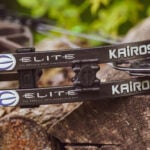When I think of bowhunting, it most often brings to mind independence and resourcefulness. Bowhunting has traditionally been about making due and operating by your wits. To this effect archers and bowhunters are often the ultimate MacGyvers, especially the traditionally-oriented among us. In the spirit of this attitude, here are some of our favorite bowhunting hacks, tips and insights that save you money, make use of common household or discarded items, or simply offer interesting projects for the off-season archer or bowhunter.
Used Firework Tube for Target Range Arrow Quiver
After the Fourth of July or New Year’s Eve celebration, keep one of those fireworks mortar tubes to hold your kids’ arrows while shooting in the backyard. Mortar tubes have stable bases that allow them to be set on any flat ground to keep shorter arrows handy while shooting. Find a big enough one and it’ll work for the big kids too.
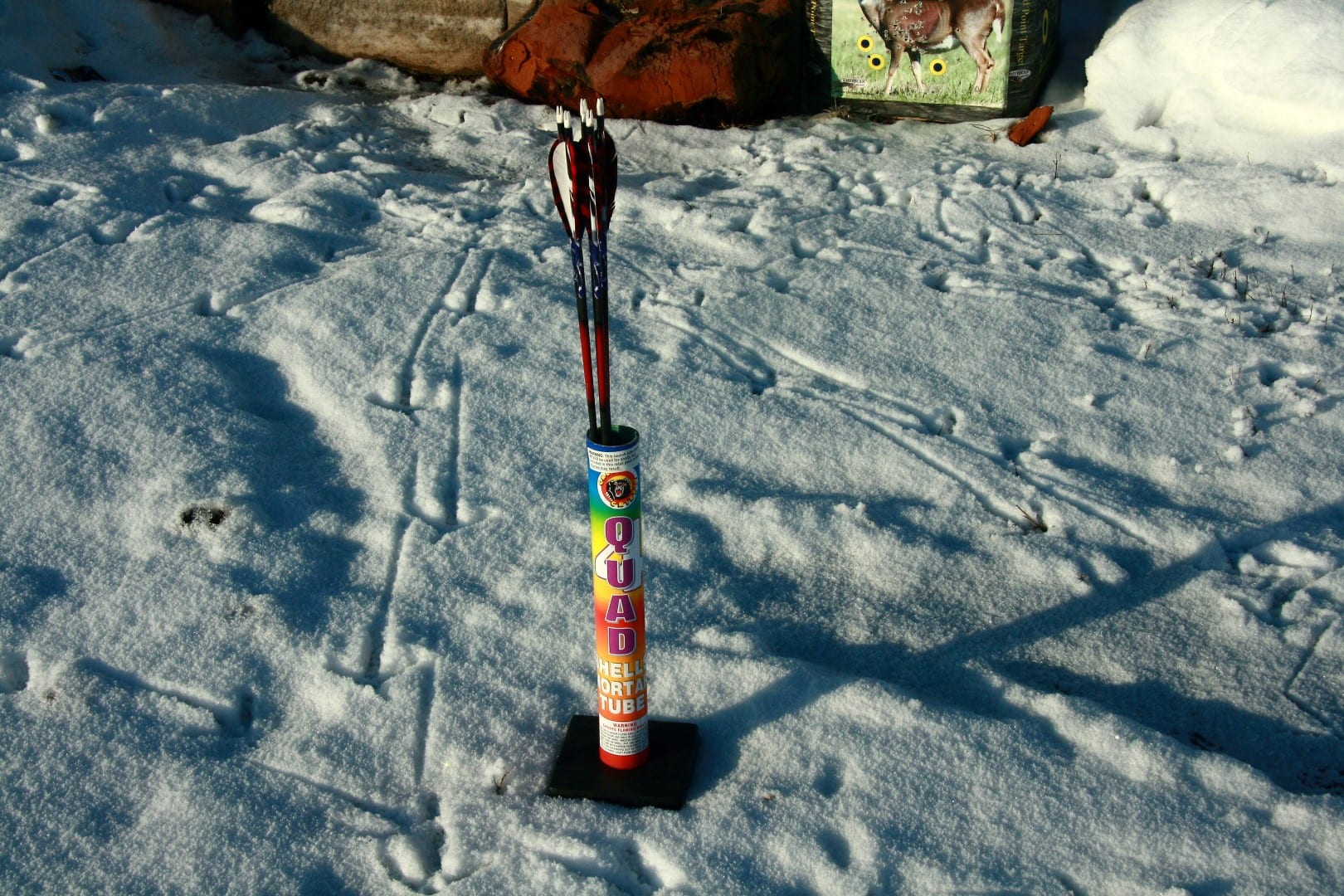
Leftovers from the fireworks show make great little arrow quivers for the target range.
Burned Wine Cork for Face Camouflage
Use an old English commando trick the next time you need face camo. Take any natural cork (not foam) from a wine or champagne bottle, char the end with a butane lighter and smear the blacked end on your face and hands. Re-char as needed. Burnt cork takes the shine off, stays in place, generally won’t irritate skin pores (it even soaks up excess oils) and washes off easily with soap and water.

Use a burnt cork to doctor up your face camo when you’re in a pinch.
Use Game-Bird Feathers for Wind Detectors
The next time you bag a mess of upland game birds or waterfowl, stuff several handfuls of breast feathers into Ziplok bags while field dressing them to save for future bowhunts. Release the small, fluffy feathers to ride breezes and reveal wind direction and help you keep offending scent out of the noses of big game. You can also tie a single breast feather to a thin piece of dental floss and a limb tip or stabilizer end to indicate wind direction while stalking or sitting.
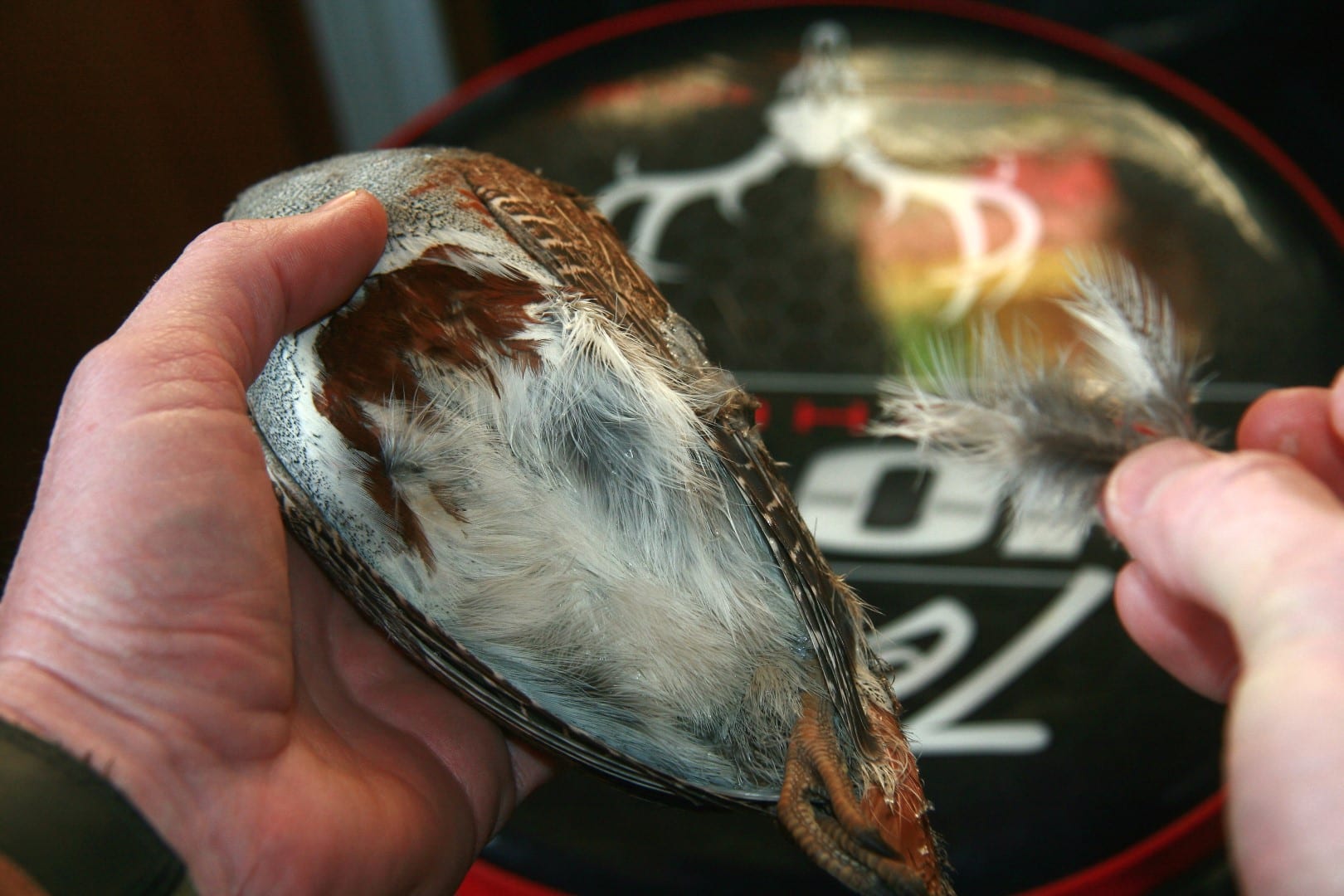
Feathers make great natural wind detectors.
Lighted Nock With Fishing Mini Glow Stick
The fishing industry offers tiny glow sticks as rod-tip strike indicators for night fishing. These small glow sticks just happen to pressure fit tightly into the hollow rear of many brands of standard S or Signature Nocks. Just break an inexpensive stick before the hunt for up to 5 hours of illumination. “See-through” nocks are required. These glow-sticks can also be duct-taped into place to light fiber-optic sight pins.
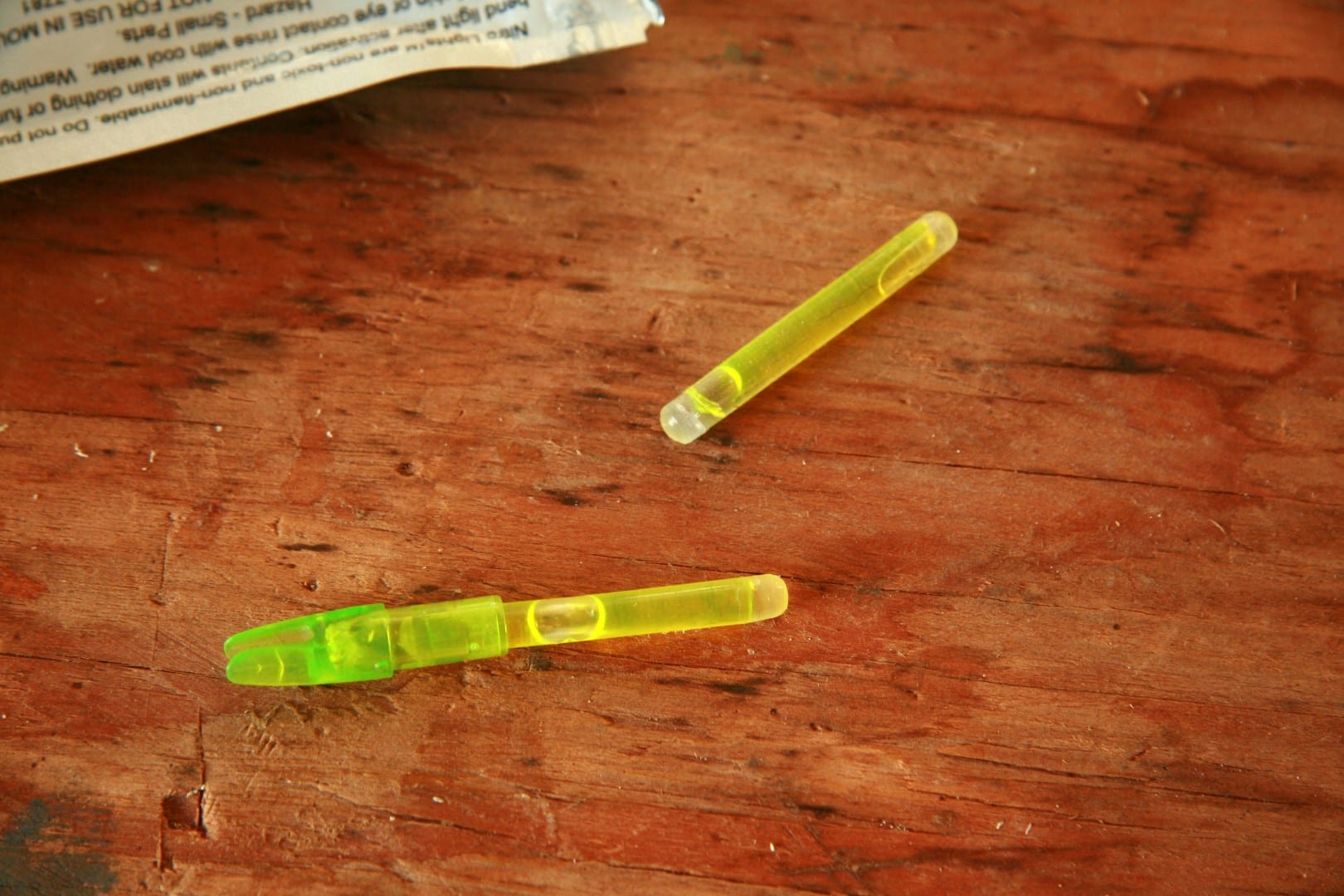
Make your own lighted nock with a fishing glow stick.
.38 Special/.357 Magnum Brass for Wood-Arrow Blunts
Despite the proliferation of carbon arrows, wood shafting is still hugely viable, especially for traditional bowhunting. You can make excellent small-game and stump-shooting blunts by slipping .38 Special or .357 Magnum brass cartridges over the ends of uncut wood arrows.
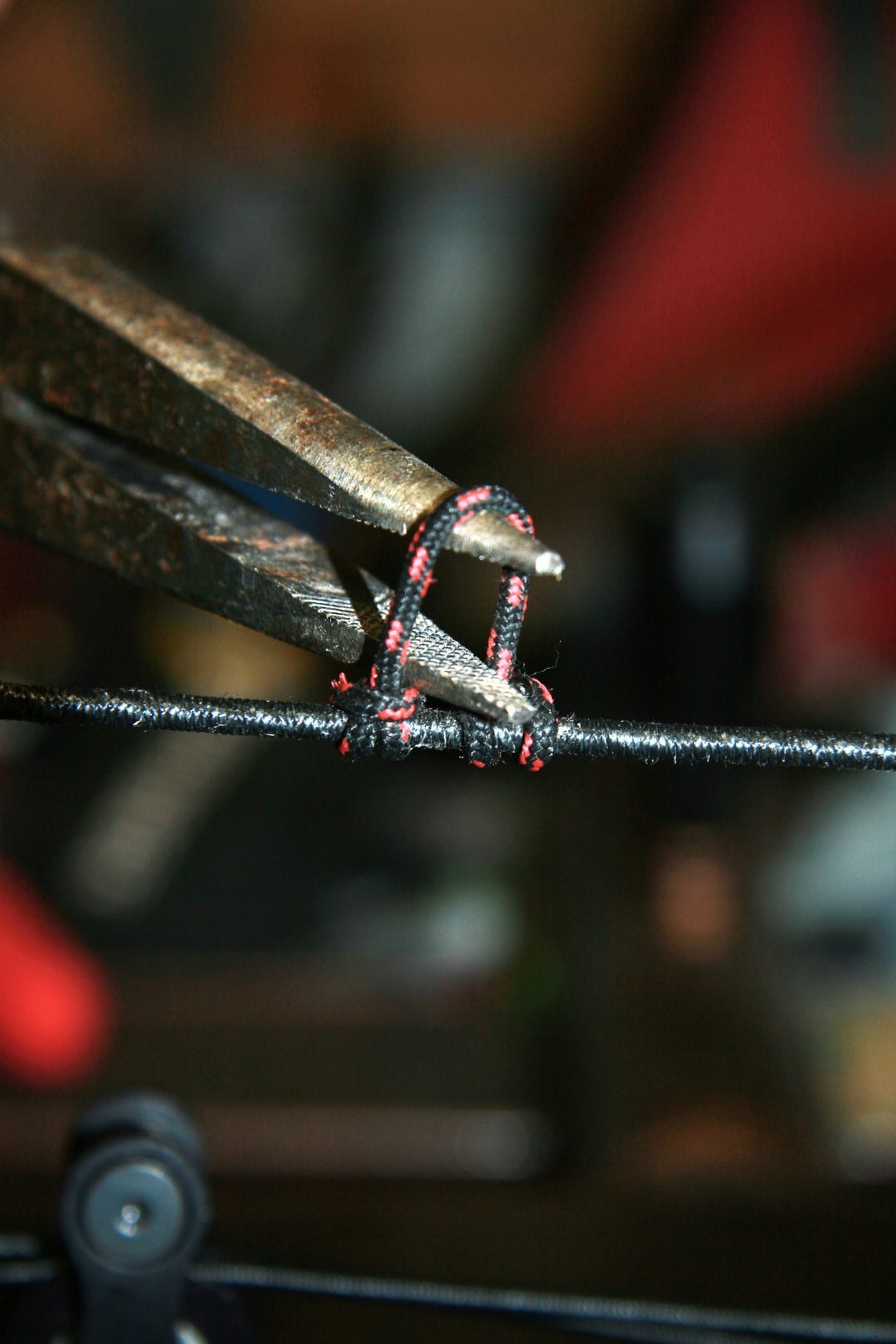
Needle nose pliers work just fine for securing D-loops.
I carefully drill through the primer pocket and into the front of the arrow with a 1/8-inch bit and use a ¼-inch, big-head cap screw to add weight and durability up front.
Needle-Nose Pliers for String-Loop Tool
You don’t need a special string-loop tool to create perfect, tight string loops. Tie one cow hitch knot below the nocking point, laying the material parallel to the serving and tying another cow hitch. Insert the tip of the needle-nose pliers, push in deeper to tighten the loop, then pull the handles open to set the loop snuggly.
Inner-Tube for Arrow-Shelf or Recurve-Limb Padding
An errant arrow clicking against an aluminum bow riser can ruin an entire season. The slap of a bowstring on a recurve’s limb curves can cause critters to “jump the string.” Eliminate these game-spooking noises by cutting pieces of old bicycle inner-tube to fit and super gluing in place over these areas. Use masking tape to hold firmly in place while adhesive cures.
Paracord Wrist Sling on Your Bow For Multiple Fixes
There’s a million uses for paracord around camp, on hunting trips, and in the backcountry. So be sure to outfit your bow with a paracord wrist sling that you can convert into emergency rope in a pinch. Hanging meat, fixing tents, strapping down equipment, backpack repair, and the list goes on.
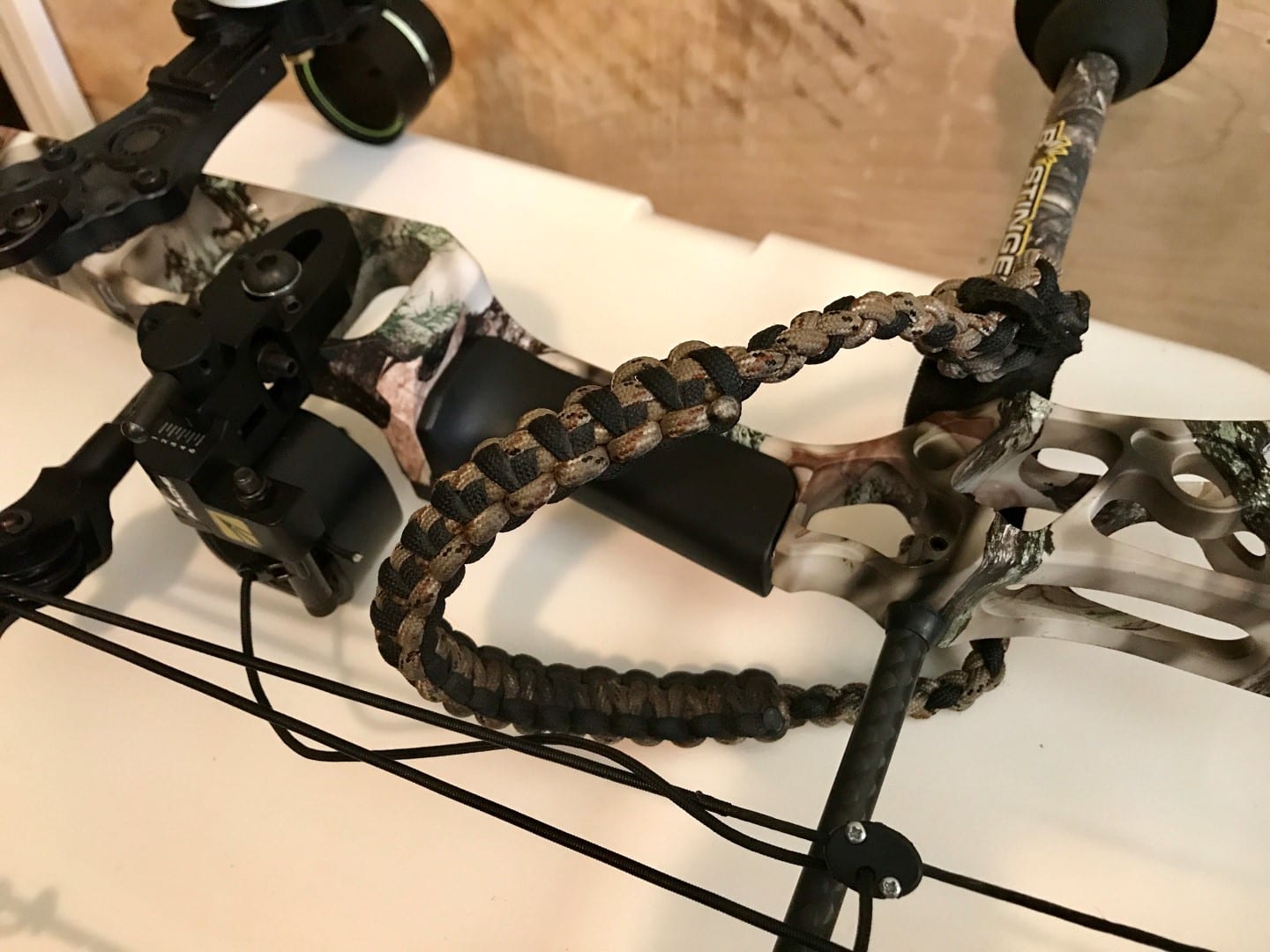
Put a paracord wrist sling on your bow and you’ll always have rope with you should an emergency arise.
Rubber Wristband Bracelets as Dampening Devises
Use those stretchy rubber bracelets sold or given away these days for anything from raising cancer awareness to advertising product as vibration dampeners on accessories such as round sight apertures, arrow-rest mounting brackets or wound around stabilizer ends. The thick rubber bands used to bundle vegetables such as broccoli also work well for soaking up excess bow and accessory vibrations.
Discarded Pill Bottles for a Waterproof Match Case
Use grandma’s or uncle Joe’s discarded pill bottles to carry strike-anywhere matches in while hunting to keep them safe against wet weather in case of an emergency. Child-proof lids won’t pop open accidentally in your pack and assure dry matches are always on hand when needed, should you become lost, or just need to warm up after a sudden thundershower.
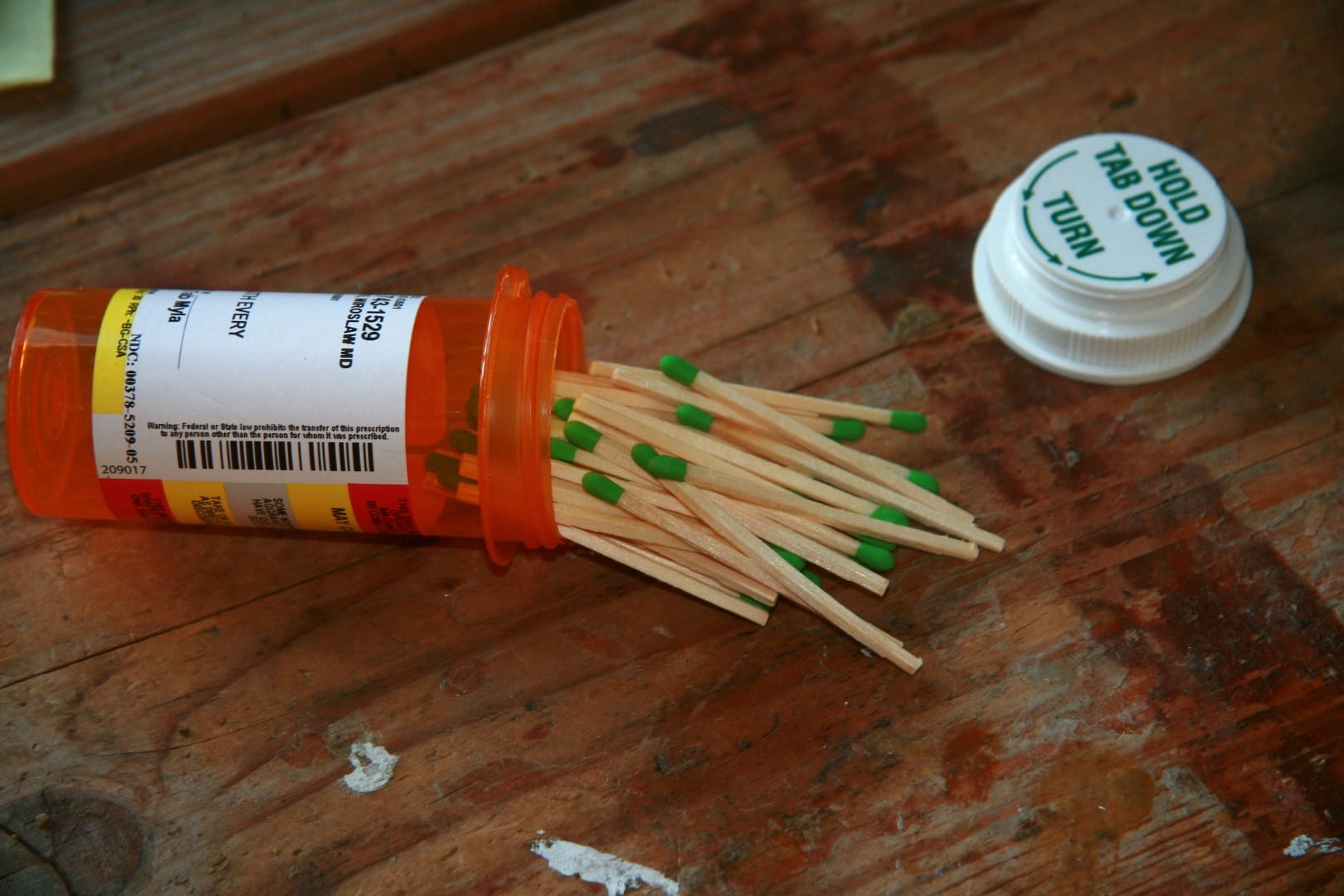
You’ll find plenty of uses for discarded pill bottles. They work great for keeping matches dry.
Soak Gun-Cleaning Patches in WD-40 for Fire Starter
Try this for your daypack survival kit. Stuff an old pill bottle with locking lid with 2-inch square, cotton gun-cleaning patches and spray WD-40 lubricant directly into the bottle until the patches are thoroughly saturated. Touch one of these patches with a match and it bursts into sustained, hot flame for lighting damp tinder. They can also be used to wipe away rust or grime from bow parts, keep broadhead edges safe against the elements or rub into screw-in tip threads to assure no galling or sticking.
Build a Traditional Bow from an Old Compound Riser
Here’s a project to keep away cabin fever during the off-season. Those defunct compounds from the ‘80s and ‘90s serve little use for the modern bowhunter, but can be resurrected by using the riser as the base for a recurve bow. Affordable takedown limbs from makers such as Samick Sports or October Mountain Products (though any take-down recurve limb can work) are fitted to the riser using standard limb bolts.
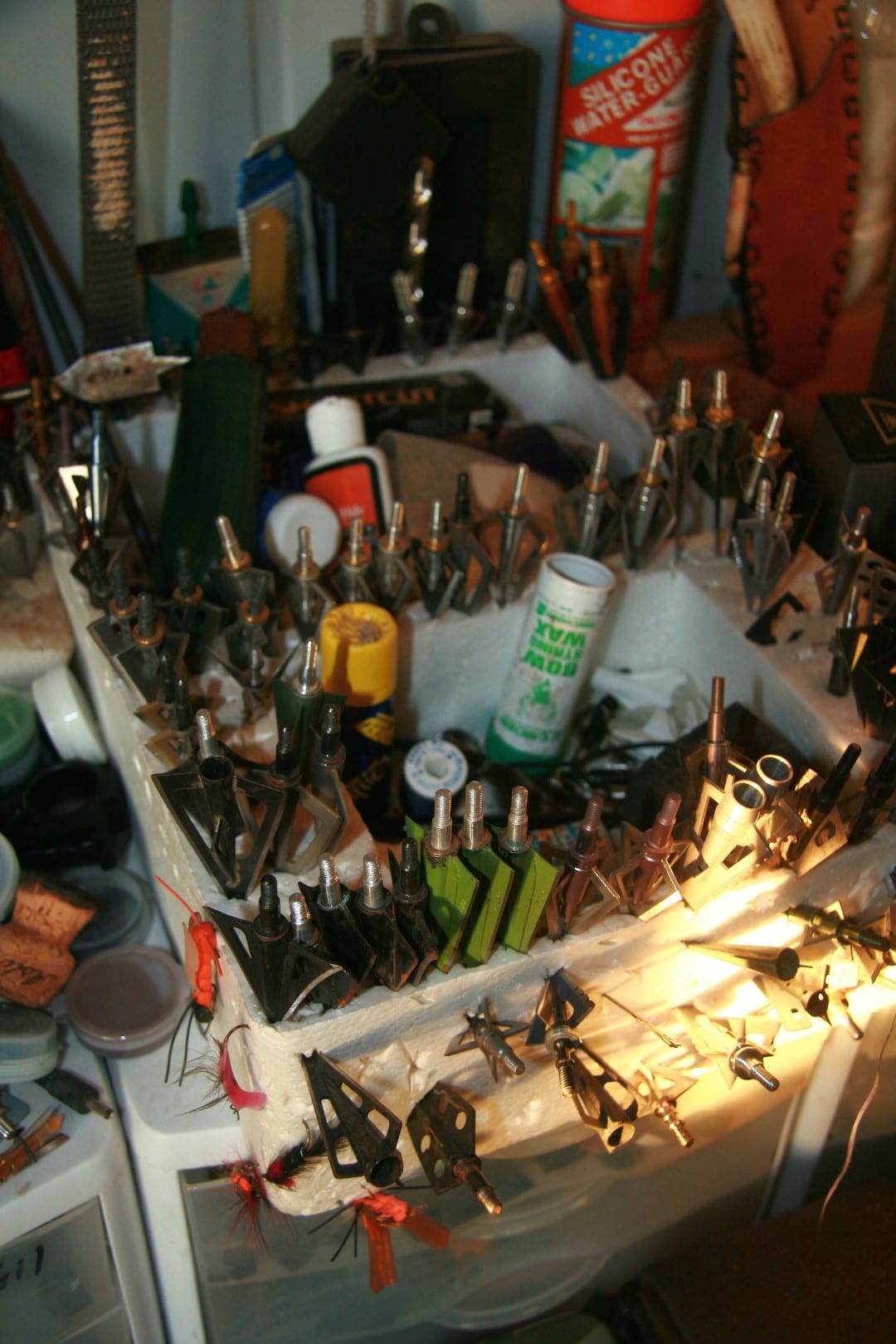
Some trial and error matching is often required, but there are plenty of old bows laying around in garages, attics and pawn shops. Look for risers with flat take-off angles that situate the limbs straight up and down, instead of parallel-limb compounds with limb pockets tilted rearward. Some shimming may be required, but it’s part of the fun of making a “bastard” compound.
Foam Clam-Shell a Bow Bench Organizer
Have a cluttered shop space? A half of a small to medium appliance styrofoam clam-shell makes a great organizer. The best include a hollow center and at least 1-inch-thick walls. I place this clam-shell half on my bow bench, tossing odds and ends into the center cavities (nocks, knives, wind checkers, boxes of spare broadhead blades, compass and so forth). I also stab fully assembled or sharpened broadheads into the rim for handy storage, where edges remain sharp and I can see them when I need them.
Tackle Box to Organize Vanes and Feathers
Fletch your own arrows? Never can locate the fletchings you want? Buy two or three clear fishing-lure boxes, arrange dividers to appropriate lengths (4-inch standard feathers or vanes or 2-inch Blazer-style vanes) and drop in entire packages of fletchings. You save money by buying fletchings in bulk, so keep hundreds of them organized and out of the way. The clear boxes let you know at a glance what you have on hand while contemplating a fletching job on a dozen new arrows.
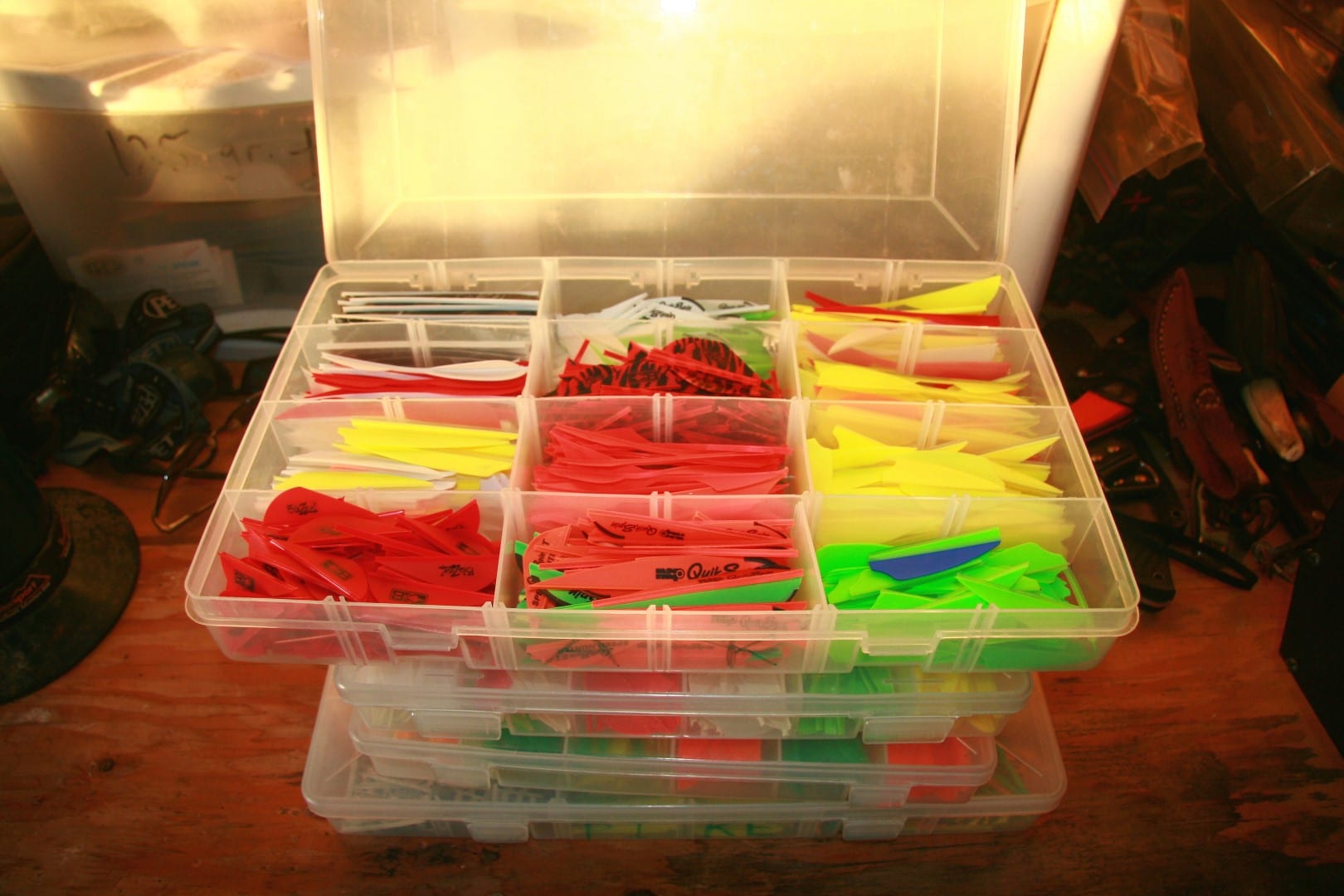
Use a tackle box to neatly organize your vanes and feathers.
Make a Bag Target with a Burlap Sack and Discarded Plastic
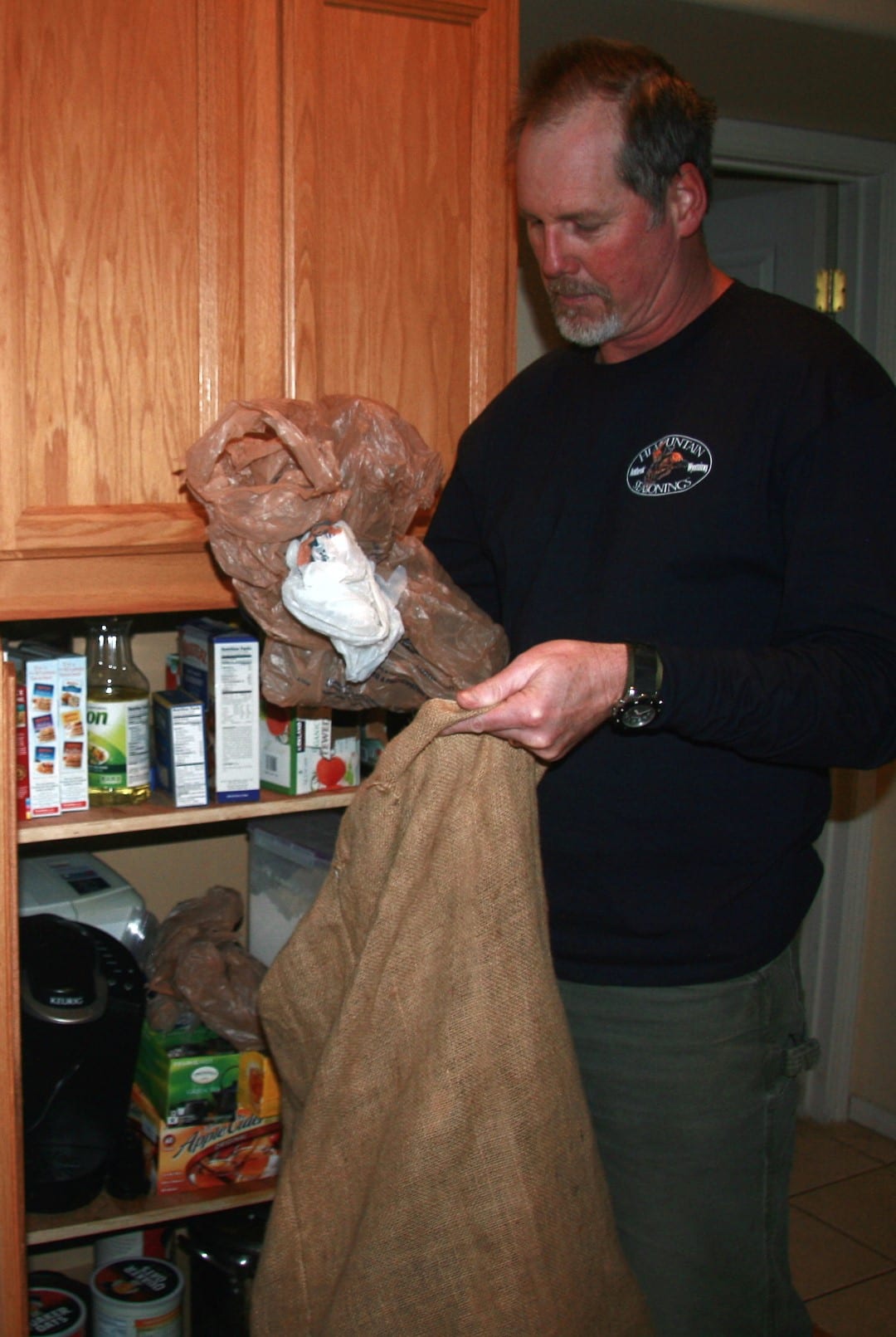
There’s a satisfaction that comes with building your own archery targets. Especially when you use trash to make it happen.
Visit your local feed store and beg or buy a quality burlap sack. Now collect every plastic grocery sack, ball of industrial film wrap, ground sheeting or trash bag you can find and stuff tightly into your burlap bag. This also solves the problem of what to do with all those annoying plastic grocery bags. When your bag is full, tie off the top securely and use as a bag target that will stop arrows from the fastest compounds or crossbows.
Use your Binoculars as a Magnifying Glass
Did you know your trusty binoculars can be used as a magnifying glass to remove troublesome splinters, thorns or cactus spines in a pinch? Just turn them backwards, looking through the objective lens instead of the eyepieces, and you should be able to find that pesky irritation through increased magnification, using a knife tip or tweezers to dislodge the offending piece.
Super Glue as First Aid
I’m sure you’ve noticed super glue seems to bond human skin better than the parts you’re attempting to join. Well, Super Glue was actually used by Vietnam medics for field first aid. Should you cut yourself with broadhead or knife, clean the area thoroughly, close the wound with your fingers and use Super Glue to “stitch” the wound closed. Add a ring of super glue around the wound, cut a piece of clean chamois to fit, and glue into place. The chamois will keep the wound clean and protected, while also allowing it to breathe and heal faster.
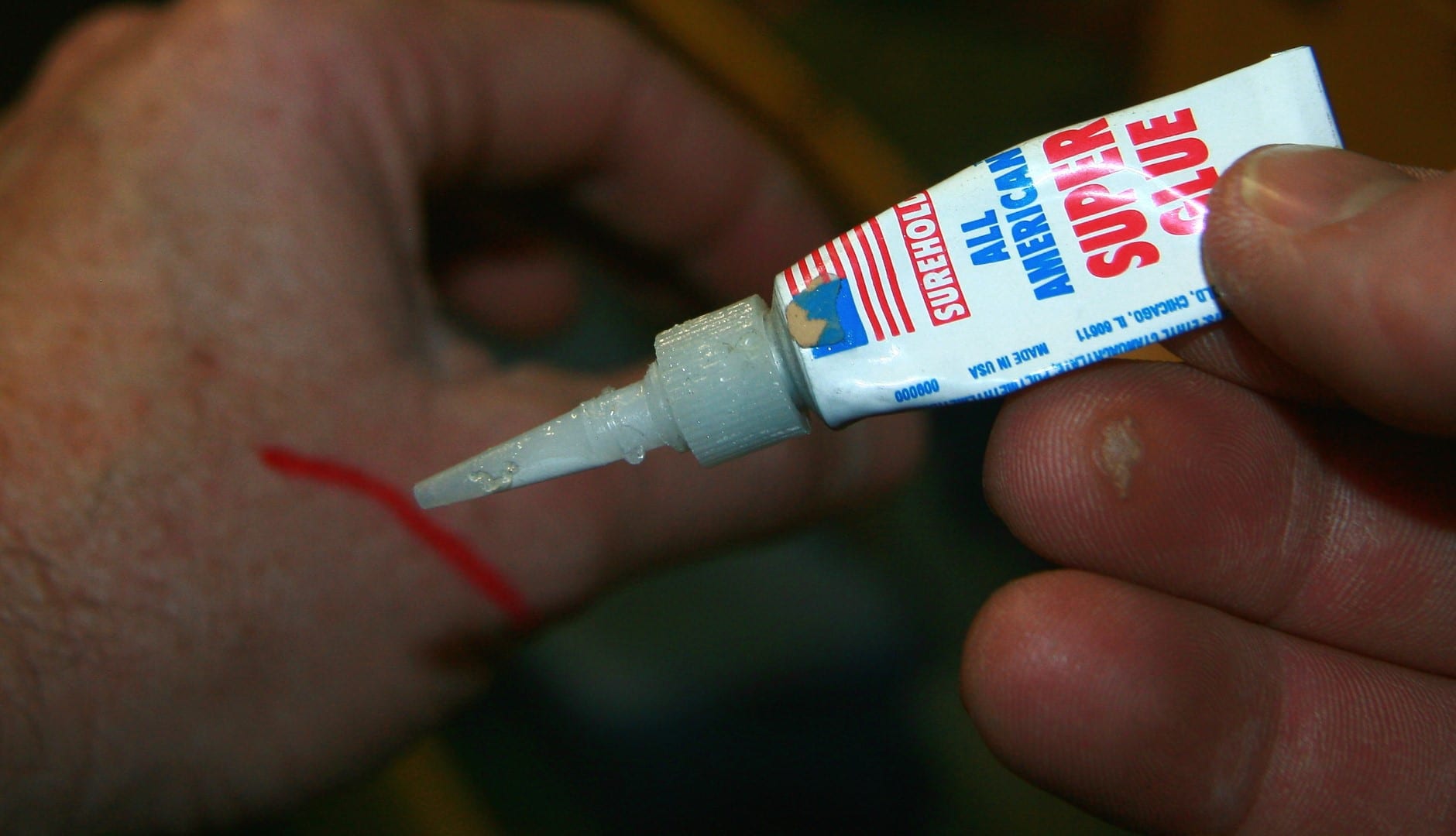
This one is no secret, but Super Glue continues to be one of the best remedies for a quick fix on cuts.
Use Small Lock Washers as Point Weights
Peruse a well-stocked hardware store and you’ll find a plethora of small lock and flat washers. Look to those closely matching the diameter of your arrows/field points/broadheads and use them as weight washers. This can help an arrow that is spined slightly too stiff to fly better, or add front-end weight to increase F.O.C. for better flight and penetration. For the traditional archer, this can also help match up odd-weight broadheads or field tips. Use a reloading scale to determine exact weight and pick those that are most useful to you (normally 5 and 10 grains).
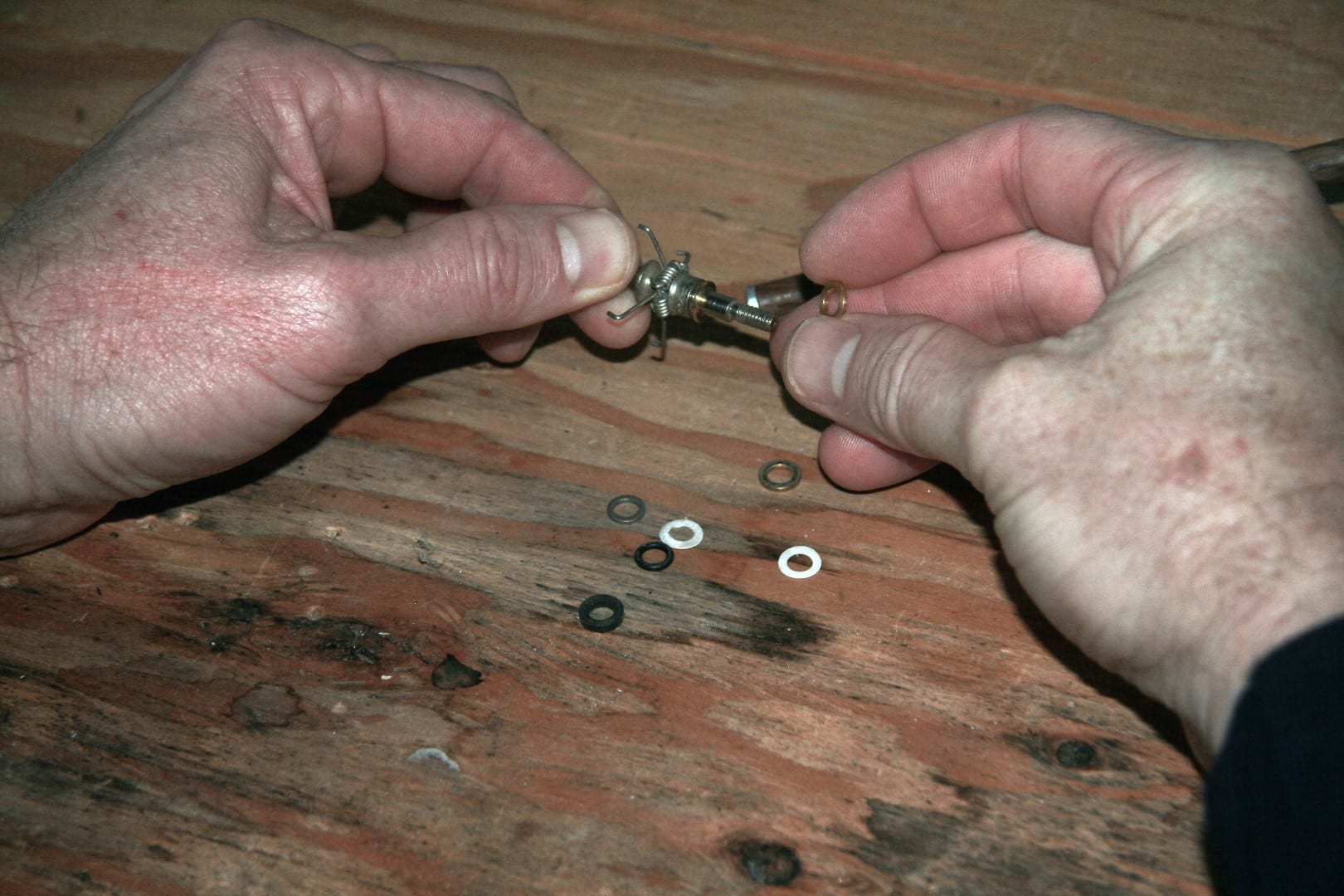
Add weight to your arrows with washers.
Keep Rubber Bands Around Your Quiver Hood
Keep rubber bands at the ready around your quiver hood for countless different uses in the woods or around camp. Securing kill tags, hanging scent products, quick-fix and repairs on equipment, around your pant leg or shirt sleeve to deter ticks and other bugs, and many more. You’ll always find plenty of uses for rubber bands. Keep them handy.
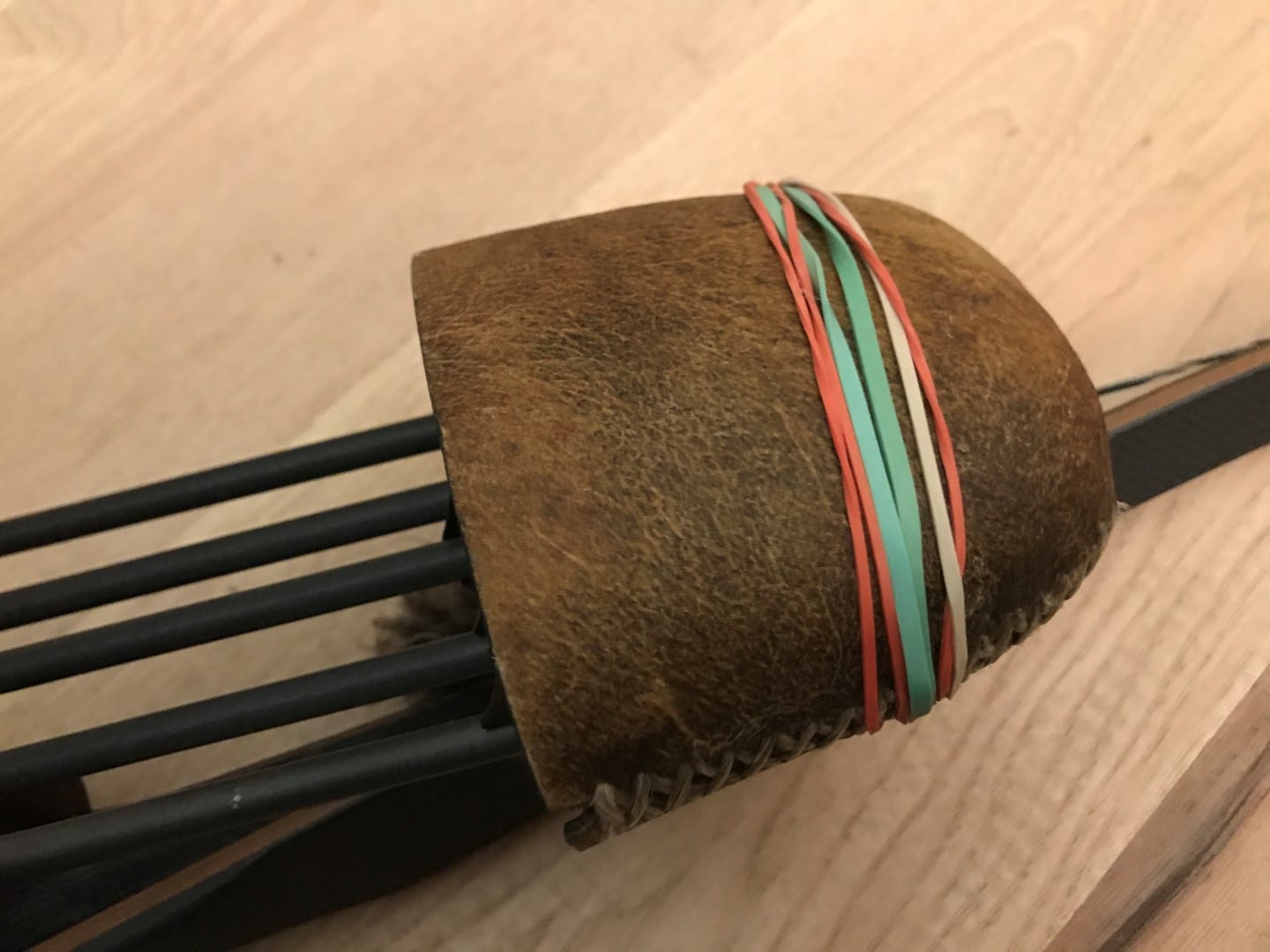
You’ll find a million uses for rubber bands. Keep them handy.
Use an Activated Lighted Nock to Mark Downed Game
Don’t simply deactivate your lighted nock and stick it back in the quiver after the kill. Leave it on and shining to make recovery in the dark much easier. Sure you can mark it with a GPS, but nothing is easier than looking up to see the beacon shining bright and knowing exactly where you need to be. The same goes for any other location you may be trying to find after dark. Camp, water source, ground blind, gear. etc.
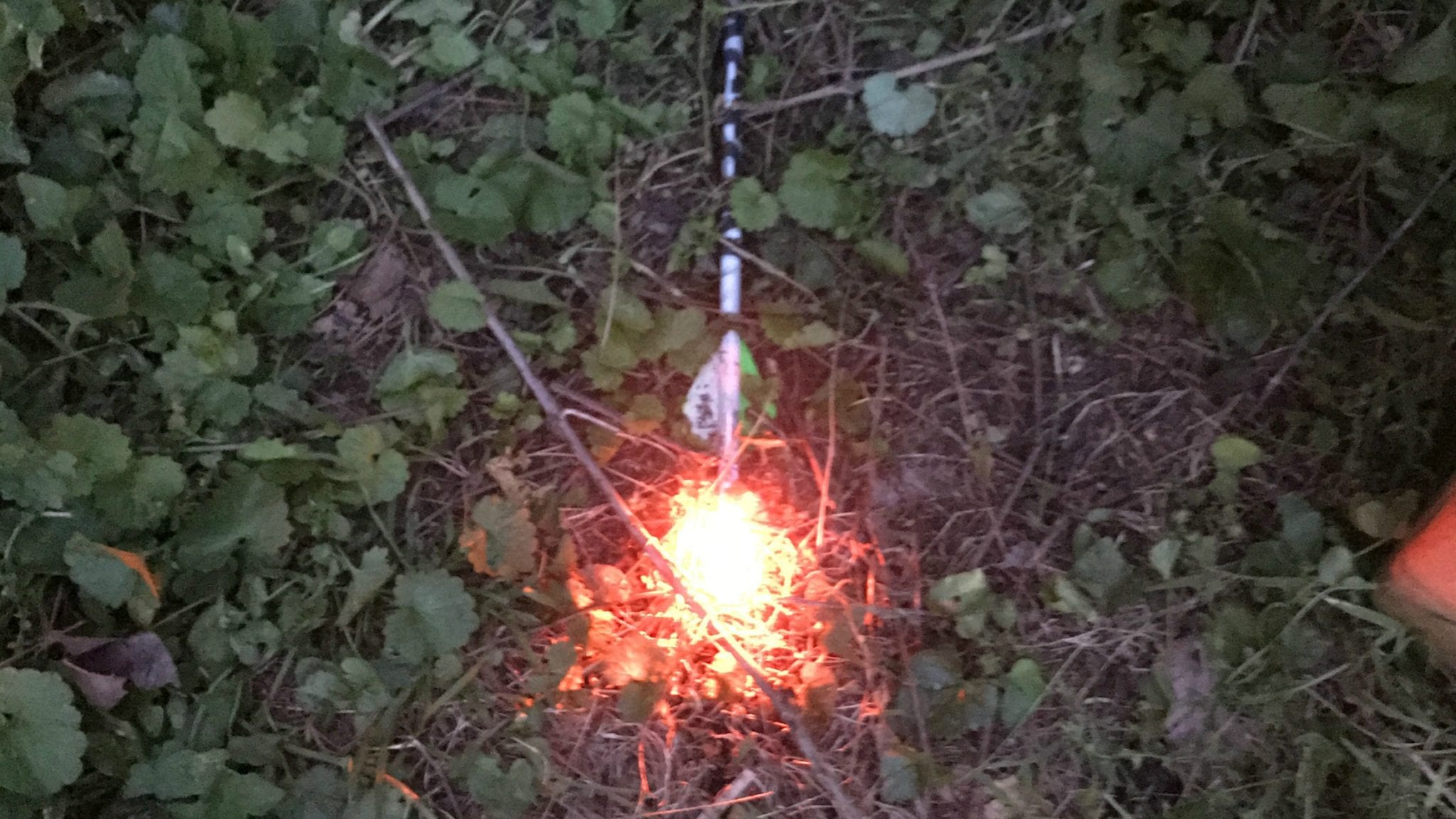
Light ’em up! Use a lighted nock to mark downed game, gear, or anything else as you go back to retrieve the truck or 4 wheeler.
Ratchet Strap Game Hoist or Bow Press
Keep in mind this is for emergency purposes only. Things can get ugly quick when you try to use a ratchet strap for purposes beyond its intended use. But they can be a life-saver, or in this case, a hunt-saver. You can use them to hoist game into the truck or ATV, onto a meat pole for skinning, and even to press certain bows when you find yourself in a backcountry equipment emergency.
Give these tools and tricks a try this season when you find yourself in a pinch. And be sure to comment below and let us know what tricks you’ve come up with along the way that we might try on our next hunting trip.

 By
By 
